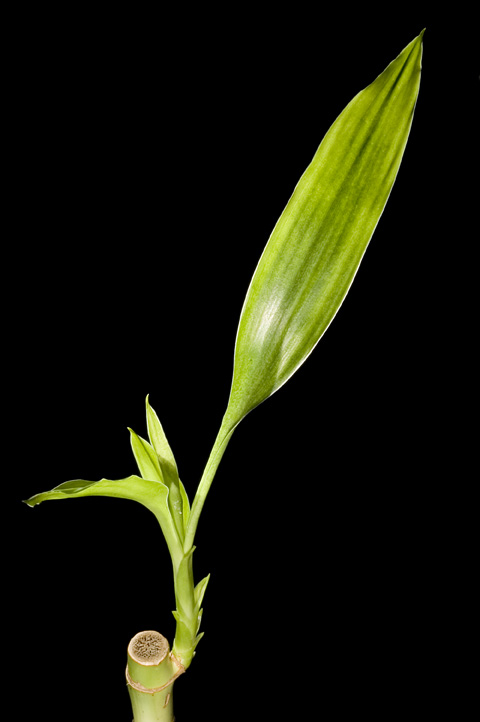
The commonly named "lucky bamboo" plant you can buy at any mall and else where, all over the USA, is in reality an unrelated species: Dracaena sanderiana.

leaves
| Kingdom | Plantae |
| Division | Magnoliophyta |
| Class | Liliopsida |
| Order | Asparagales |
| Family | Ruscaceae |
| Genus | Dracaena |
| Species | D. sanderiana |
Dracaena sanderiana is also known as Ribbon Dracaena, and is native to Cameroon in tropical west Africa. It is one of a group of small, shrubby species that grow as understorey plants in rainforests. Dracaena sanderiana can grow to be 1.5 m tall, with leaves 15-25 cm long and 1.5-4 cm broad at the base.
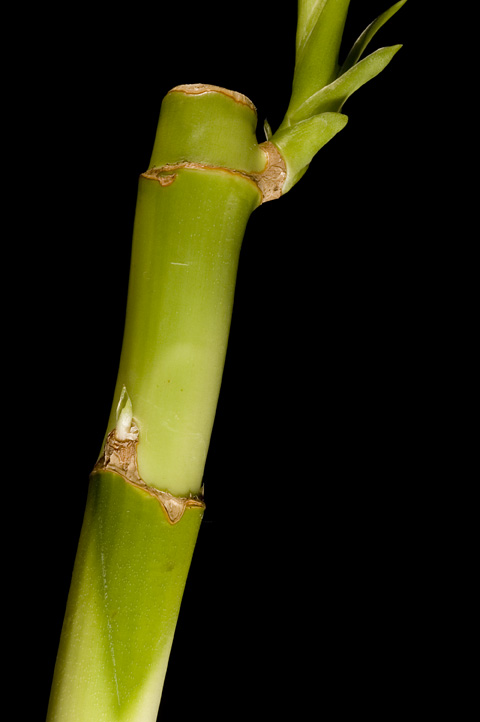
stem (culm)
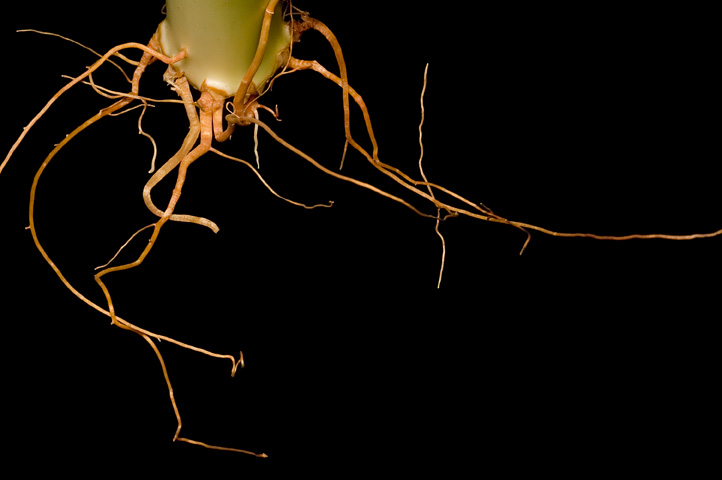
rhizome (root)
"Real" Bamboo on the other hand, are the tallest species in the true grass family Poaceae. Bamboo are woody, perennial evergreens. There are approximately 1,000 species of bamboo and they populate the diverse climates of Northeast Asia, Southeast Asia, all the way to the west in the Himalaya, and south to Northern Australia. They also occur in sub-Saharan Africa, the Southeast of the USA, through South America ending in Chile.
| Kingdom | Plantae |
| Division | Magnoliophyta |
| Class | Liliopsida |
| Order | Poales |
| Family | Poaceae |
| Subfamily | Bambusoideae |
| Supertribe | Bambusodae |
| Tribe | Bambuseae |
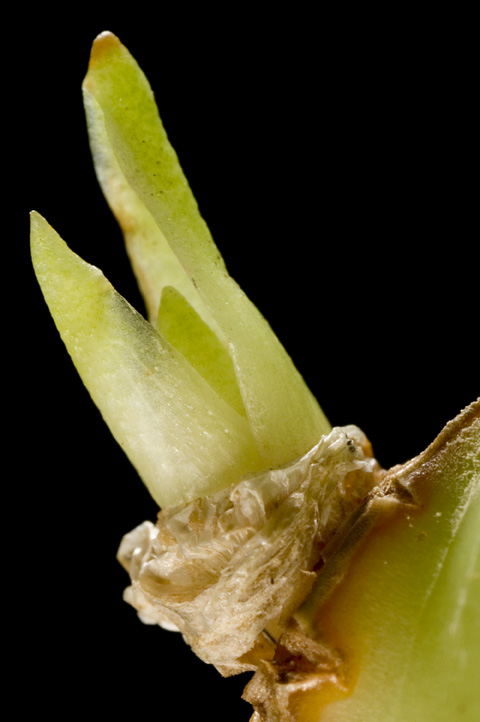
node's bud, 3x mag.
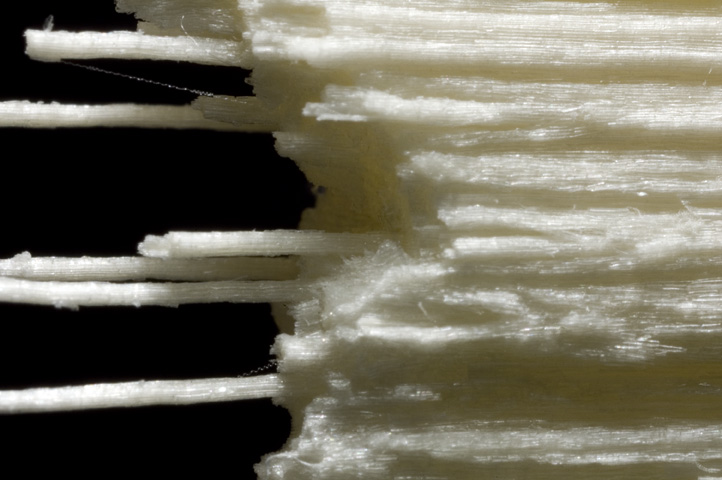
fibers, 3.5x mag.
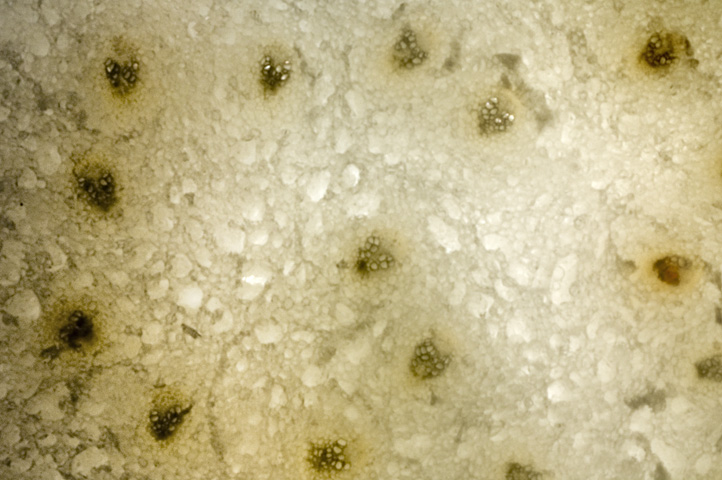
cross section, 6.5x mag.
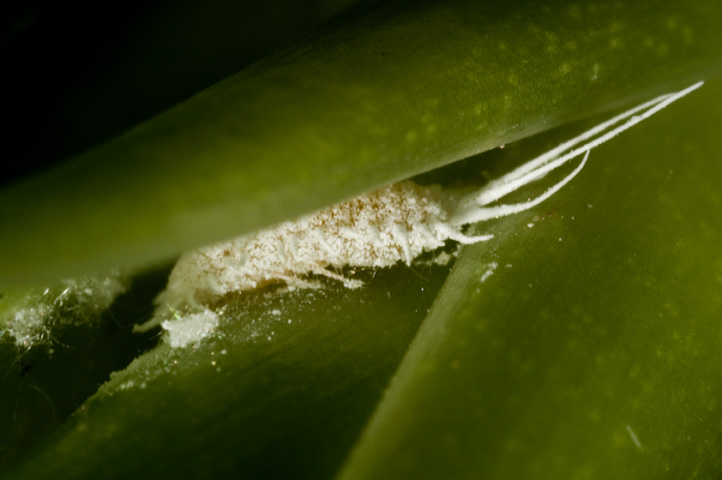
Palmicultor lumpurensis, "Mealybug", 4x mag.
Palmicultor lumpurensis, (Bamboo Mealybug) is a bamboo-specific mealybug that was first officially reported in 2002 in Central Florida. The mealybugs are multi-stage insects and are easily identified when they are surrounded by sticky white webbing, usually found on new culm tips or branches. Mealybugs won't kill a bamboo plant, but they can get unsightly.
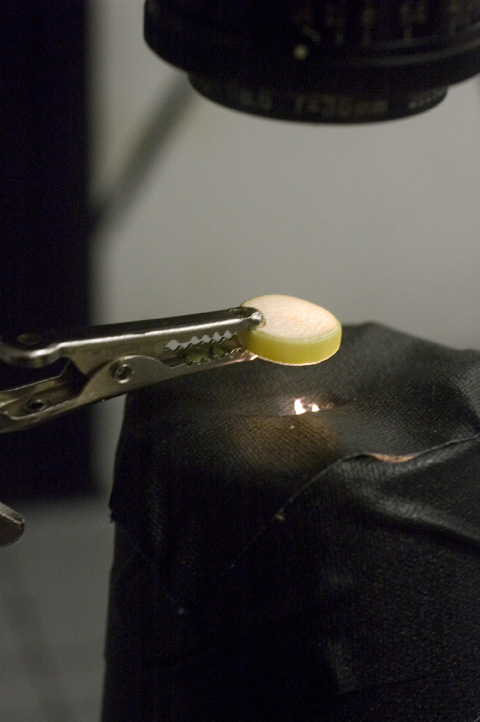
Set-up
Photo Techniques
For all of my shots I used a Nikon D-70 camera and switched between a 55mm macro lens and a 38mm thimble lens. I used reflective illumination, full transillumination, and partial transillumination techniques. In the above set-up I used a styrofoam cup covered in black tape over a tensor light, in place of a fiber optic light.
Works Cited
Tropical Bamboo. “Maintenance / Care.” 8 Nov. 2006
<http://www.tropicalbamboo.com/Bamboo_Maintenance.asp>.
Wikipedia. “Bamboo.” 8 Nov. 2006
<http://en.wikipedia.org/wiki/Bamboo>.
Wikipedia. “Dracaena sanderiana.” 8 Nov. 2006
<http://en.wikipedia.org/wiki/Dracaena_sanderiana>.
I am currently a third year student, eager to learn from your feedback. Please feel free to contact me.
All images copyright © by Kathryn Lebbon 2006
Return to
index of articles
by students on the 'Principles and techniques of photomacrography'
course, November 2006,
Biomedical Photographic Communications (BPC)
program at the Rochester Institute of Technology (RIT).
Article hosted on Micscape
Magazine (Microscopy-UK).